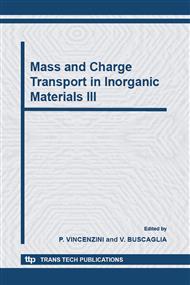p.89
p.93
p.98
p.104
p.111
p.120
p.126
p.136
p.146
In Situ Ultrahigh Vacuum Transmission Electron Microscope Investigations of Dynamical Changes of Nanostructures on Silicon
Abstract:
In situ ultrahigh vacuum transmission electron microscope (TEM) is a powerful tool to investigate the dynamic changes of nanostructures on silicon. By observing growth and phase transitions in situ, understanding of their mechanisms can be used to model relevant processes. With the precise knowledge of the changes occurred on an atomic level, accurate control of the growth process can be achieved. The dynamical changes occurred on the nano scale are often unexpected, which also underscores the importance of the approach. In this presentation, we highlight two examples to demonstrate the unique capability of in situ TEM to study the dynamical changes. The examples include collective movement of Au nanoparticles and directed movement of Au-Si droplets on Si bi-crystal.
Info:
Periodical:
Pages:
111-119
Citation:
Online since:
October 2006
Authors:
Keywords:
Price:
Сopyright:
© 2006 Trans Tech Publications Ltd. All Rights Reserved
Share:
Citation:


